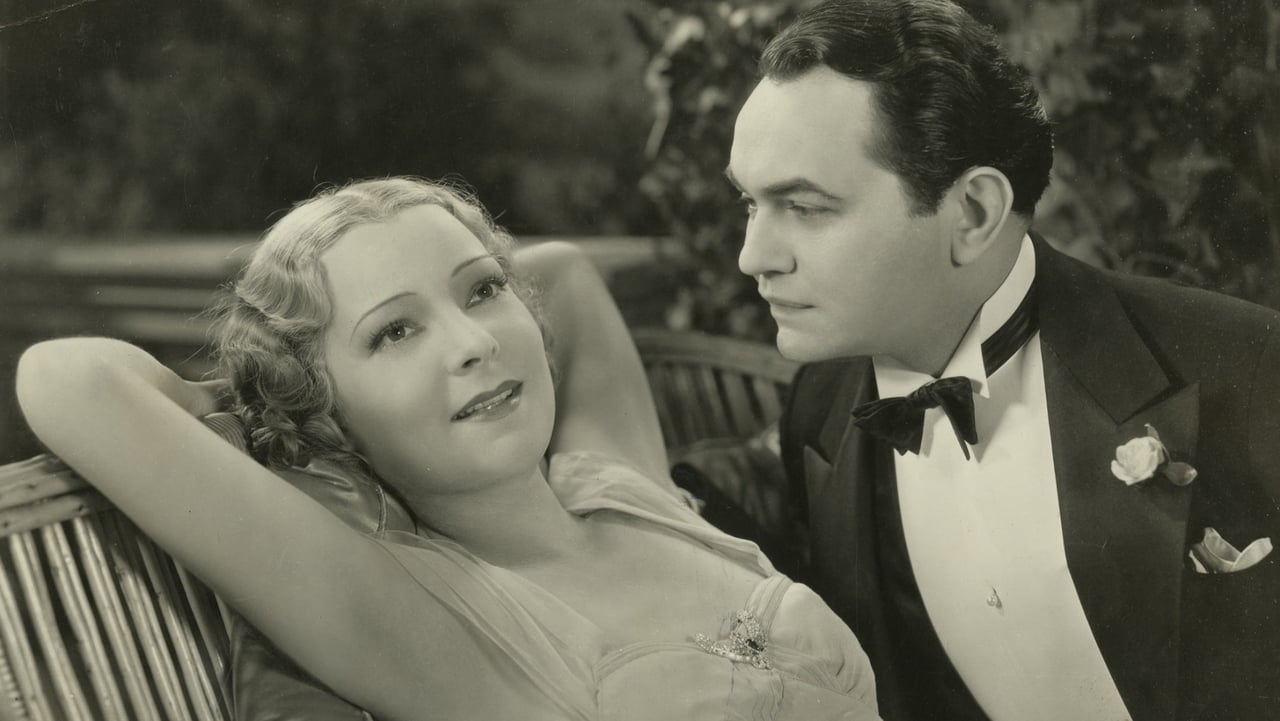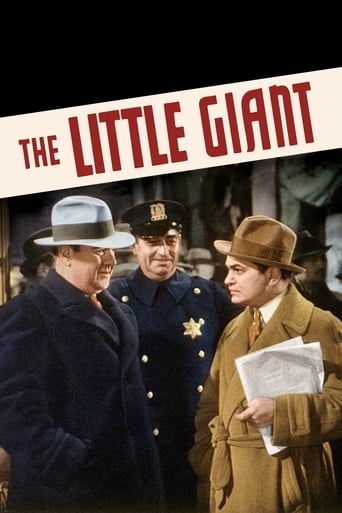

Admirable film.
... View MoreClever, believable, and super fun to watch. It totally has replay value.
... View MoreWatch something else. There are very few redeeming qualities to this film.
... View MoreThe movie is wonderful and true, an act of love in all its contradictions and complexity
... View MoreEdward G. Robinson who would occasionally channel his gangster image into comedy roles does it for the first time here in The Little Giant. He plays a gangster from Chicago named James Ahern aka Bugs Ahern who has seen the end of Prohibition and has wisely salted away his money. Wanting a little class and wanting to mix with the upper crust he moves to Santa Barbara and starts mixing.Unfortunately he mixes with a family of society crooks father Berton Churchill, mother Louise Mackintosh, son Donald Dillaway. Worst of all he falls for Helen Vinson playing one of her patented bad girl roles who is a notorious flirt. Robinson has rented a mansion from down on her luck society girl Mary Astor who along with thousands of others had her savings wiped out by investing in the junk bonds that Churchill's firm sold. And now he's sold the firm to Robinson.No one makes a sucker out of Robinson and he settles the matter with some friends imported from back east who do it Chicago style. The real Bugs Moran would never have been this gentle as Robinson's old beer salesmen were in The Little Giant.Robinson got deserved kudos for essaying comedy and he would do it many times in his career. You have to see how he and his friends play polo Chicago style.A must for fans of Edward G. Robinson.
... View MoreProhibition ends and gangster boss Bugsy Ahearn, like so many during the depression, finds himself unemployed. What to do? Fortunately, he has laid aside much of his ill-gotten gains and has no money worries. So he decides to improve himself, to acquire some culture and move in elite circles. And therein lies a very funny story.Edward G. Robinson shows a flair for comedy and shows off some of his immense talent as a social climber who decides to shoot the moon. He moves from Chicago to the West Coast, buys a mansion and falls for a lady from a family of swindlers, and generally falls into a series of mishaps, each one funnier than the last. He gets excellent support from Mary Astor, who becomes his guide to the finer points of becoming 'quality'.You will gain great respect for Robinson if you've only seen him in tough-guy roles, as he carries the picture as a society naif in this written-for-the-screen comedy. There are no dead spots, either, as the story moves along briskly in an enjoyable 75 minutes. It was shown at Cinefest, Columbus, O., 6/13.
... View MoreIf anyone is looking for a great Mob Comedy, that really is a MOB Comedy, this is it. Spoilers: It is about a Bootlegger named Bugs Ahearn (Edward G. Robinson), and his second in commend Al Daniels(Russell Hopton), who decide to go straight after Prohibition ends, and move out to Beverly Hills and find out that the businessmen out there (Such as the Cass Family (Led by Father Donald Hadley (Barton Churchill), and not so sweet Polly (Helen Vinson)), who are far more crooked then the Mob ever was (They have a code of honor). The only person who knows the truth about how they are playing him as a sucker is Ruth Wayborn (Mary Astor), who has to act as his Personal Secretary, but really loves him. Mary knows the truth, because she was once rich, and they swindled her out of her fortune, so she has to rent out her mansion (Which Bugs did not know). When he finds out the truth about how gullible he was (They stuck him and many others with worthless stock certificates) he is so dejected, he gives a $15,000 wedding ring that he bought for Polly to a blind man, begging for money. One of the best scenes occurred in the DA's Office where he was told that not only was broke, but he would be going to jail for the swindle. The only way he could avoid this is get the money back. He asked the DA to let him make a call, and it went straight to the Boys in Chicago, and they could not wait to get back into action (Including boarding planes with Machine Guns). Not only did they got back all of the investors money plus interest, with heavy duty shakedowns (Including torture to a crook who refused to pay up), it was done in a way, that when the Mob took over the crooked investment company, with the assistance of Ruth (Who is good with numbers) they made sure it would be profitable for Bugs, his fellow mobsters, and the people who got their money back. The film ended with Robinson and Astor looking down from the mansion seeing gangsters on Polo Ponies, falling over themselves, and laughing about it. What is interesting is how Pre-Code it was: Including the torture scene, the DA not objecting to Robinson calling in the Mob (Showing gangsters as heroes would not be allowed a year later), Robinson referring to the rich as 'fags', and Al admitting he snorted Cocaine. Like the torture scene, no nos a year later. If you like Warner Bros Gangster films, and Robinson in particular, it should be a must see. Of course, it merits 10/10 Stars.
... View MoreThis film begins with the election of Franklin Roosevelt and an end to Prohibition. As Edward G. Robinson is the head of a gang selling illegal liquor, he knows his days of riches and glory are over. Instead of continuing in a life of crime, he wants to return in style and live among the gentry. The only problem is that although he thinks he's got class, he's a total clod...a likable clod, but a clod nonetheless. And, in society, he sticks out like a sore thumb. He is only accepted, eventually, by some selfish swells who only want him around for a chance to drain him of his money. The problem is that Robinson is such a sucker, he has no idea he's being played. At the same time, his personal secretary (Mary Astor) has fallen for him and she knows what sort of people his new "friends" really are but is afraid to tell him.Despite Robinson being an ex-crook AND chump, he's excellent here because no matter what he was like, you can't help but feel sorry for him. There is a certain vulnerability and charm about him--making this film work very well. He also seemed to have a nice knack for comedy--something that would become very apparent with later successes such as THE WHOLE TOWN'S TALKING and LARCENY INCORPORATED. His friend and sidekick, Russell Hopton, is also quite good--and it's surprising that he didn't get more work with such excellent performances.Overall, this is one of the best gangster flicks of the 1930s. Exceptionally well written and acted, and especially great in the end. Fully of laughs and wonderful moments--especially when his friends from Chicago come to save the day. A film not to be missed.
... View More